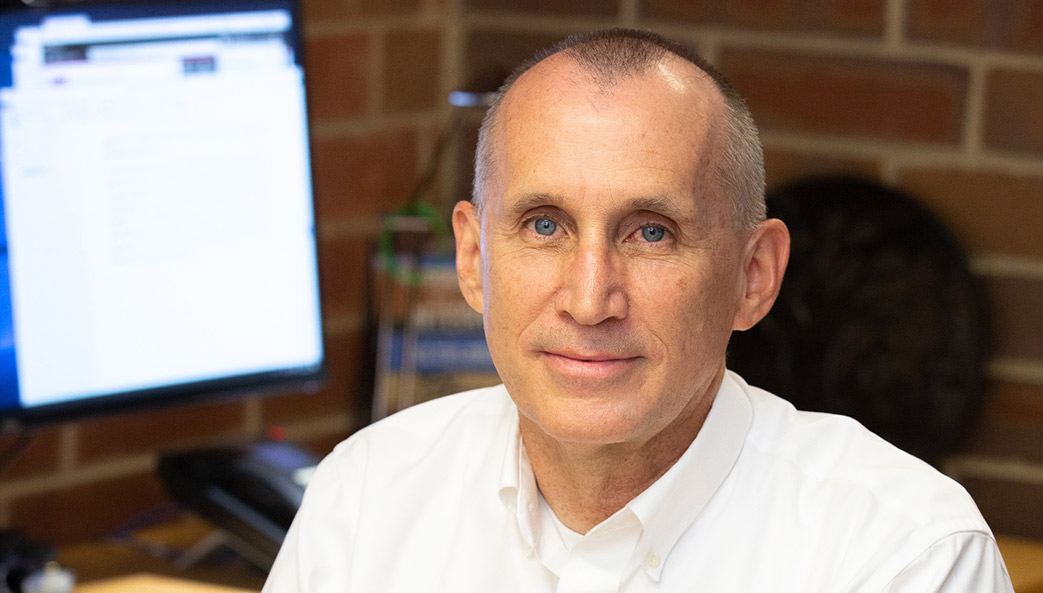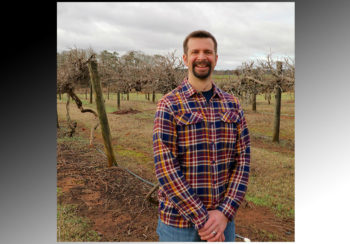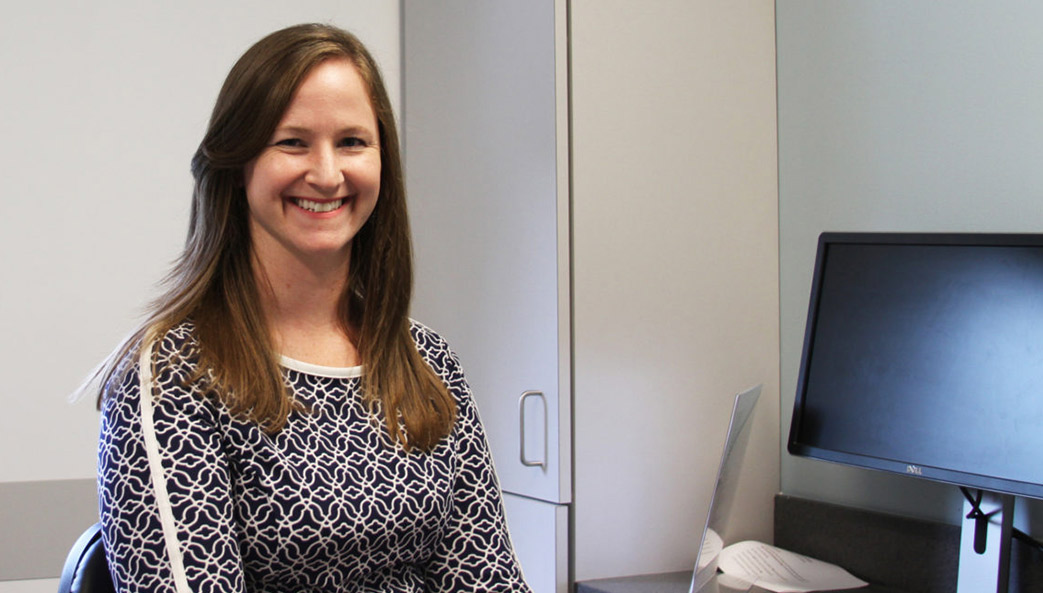University of Georgia researcher Stacey Lance is working to identify suitable habitat for Carolina gopher frogs, a species identified as endangered in the Carolinas, Georgia and Alabama, and to survey existing populations on private lands. Lance, an associate research scientist with the River Basin Center and Savannah River Ecology Lab, is working in a partnership with The Longleaf Alliance, a group dedicated to ensuring a sustainable future for the longleaf pine ecosystem in the southeastern United States.
“Through this research, we hope to gain a better understanding of the status of gopher frogs in South Carolina and a sense of potential locations for reintroduction sites,” she said.
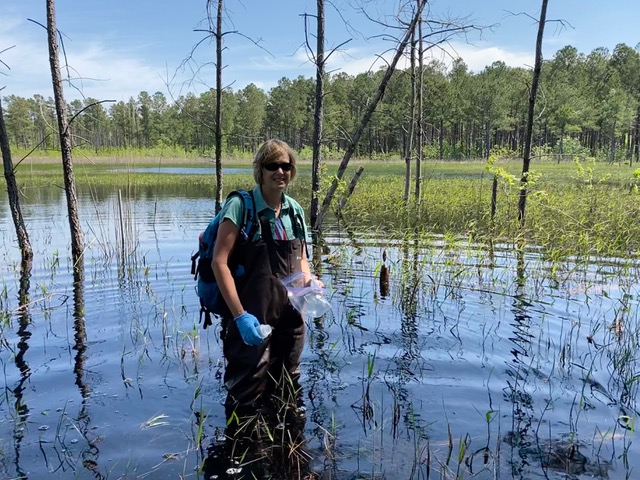
The search for gopher frogs takes place on plantations and private lands throughout South Carolina, in longleaf pine ecosystems.
“The longleaf ecosystem is a magnificent landscape—especially when managed well into a true savanna. It is home to many endemic species that make areas with this historic ecosystem unique,” said Lisa Lord, conservation programs director with the Longleaf Alliance. “But while there are huge efforts underway to restore the uplands back to what they used to be, the wetlands have been forgotten and are home to several at-risk amphibians, including the Carolina gopher frog, that are found nowhere else in the world.”
To determine the extent of gopher frog populations, the researchers used two tactics: visual searches for egg masses during the gopher frog’s breeding season in the wetlands on private lands around South Carolina, and if they didn’t have any luck spotting egg masses, DNA analysis of the water.
“We collect 250 mL of water from four locations in the wetland, filter that water, then extract DNA from the filter. With that DNA we use a quantitative PCR approach specific to gopher frogs and determine if there was gopher frog DNA present, and if so, in what quantities,” Lance explained.
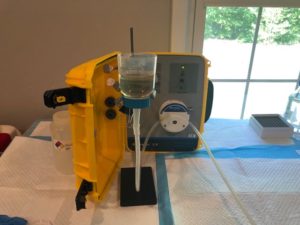
This research started in an unusual place: on the runway at Augusta Regional Airport, when two researchers recognized each other on a plane. Lance and Robert Abernethy, the recently retired president of The Longleaf Alliance, swapped seats to chat during a delay and came away with a new project idea.
And now it continues in another odd place—Lance’s living room, where she’s now sterilizing sampling equipment and filtering the water prior to DNA extractions in a bid to overcome the challenges presented by the spread of COVID-19.
From face-to-face conversations on planes to solitary work from living rooms and in wetlands, the search for gopher frog populations has persevered. These measures, in addition to the difficulties of searching for one dwindling species of frog throughout an entire state, have presented the researchers with a special challenge.
“Between a map of historic range and a habitat suitability map for gopher frogs, we’re left with an enormous area that we have to somehow whittle down to decide where to focus our efforts,” Lance said. “An additional challenge is envisioning what the property looked like in the past—maybe the wetlands and uplands look good, but we know that there are new management practices that may have recently improved the habitat. Or the uplands look great, while the wetlands are fully encroached. Meanwhile, we honestly don’t know enough about gopher frogs to know where they’re most likely to have been able to hang on all these years.”
Despite these challenges, the researchers have seen glimmers of hope for how they can help the next generation of gopher frogs.
“We are now getting into headstarting of gopher frogs. This has been done in North Carolina and Georgia, and while they are very successful at rearing tadpoles to metamorphosis in captivity, the released frogs have very low survival rates,” she said. “We will be exploring ways that the aquatic larval environment may lead to metamorphs that have higher survival and also ways to have juvenile rearing in the field, as a sort of soft release with different treatments such as increased refugia, predator exclusions, supplemental feeding, and so on.”
Through this research, Lance and partners hope to be able to eventually reintroduce gopher frogs to longleaf pine wetlands, and then assess their success through DNA analysis.
“Our hope is to answer some basic questions about how early life environments may shape later phenotypes in species with complex life cycles and to use our findings to get to the point where we can have successful reintroductions,” Lance explained. “We’ll also be using genetic techniques to determine the effective population size of remaining populations, and to assess whether released animals successfully reproduce.”
This research will also contribute to gopher frog conservation in another way: It will be used in a report being written by the U.S. Fish and Wildlife Service as the gopher frog goes up for federal listing in 2025.
This research was funded by the U.S. Fish and Wildlife Service Coastal Program and National Fish and Wildlife Foundation, through The Longleaf Alliance.




